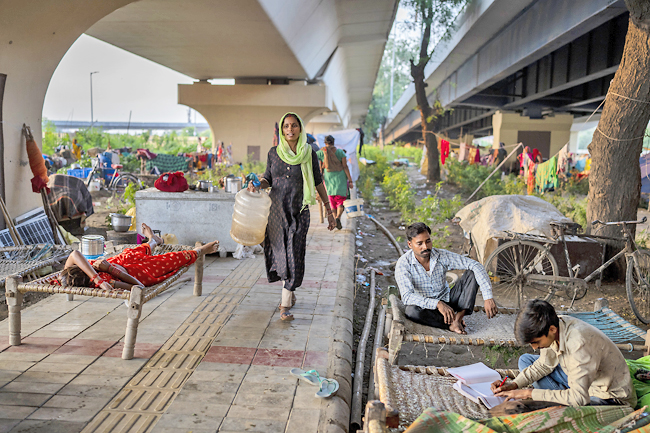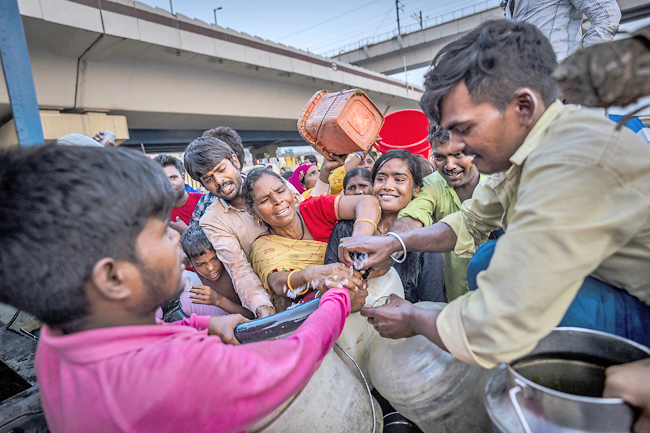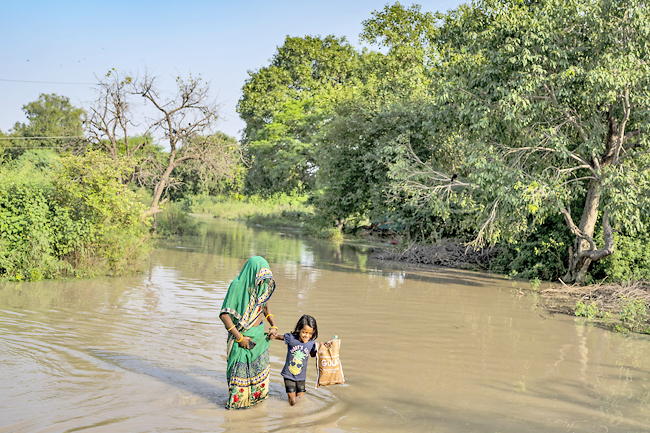Altaf Qadri
NEW DELHI (AP) – For Bhagwan Devi, 38, and Shivakumar, 40, and their four children, a flood follows unseasonal rain so often now they have less and less time to pick up the pieces and start over again.
Devi and Shivakumar had to flee their hut on the banks of the Yamuna River earlier this month as water levels rose without warning.
“This is how deep the water was,” said Devi, pointing to her chin.
The family, like thousands of others, has taken refuge on the roadside pavement, 100 metres from their now-flooded hutment.
Their story is similar to that of millions of others in South Asia who are on the frontline of climate change. According to the World Bank, climate change could force 216 million people to migrate within their own countries by 2050. In South Asia alone, 40.5 million people are expected to be displaced.
“The extreme rains in India’s Himalayan states are just the latest in a series of events in South Asia that are exacerbated by climate change,” said head of global political strategy at the Climate Action Network International Harjeet Singh.



“We saw unprecedented and devastating floods in Pakistan earlier this year. We are facing melting glaciers in Nepal and Pakistan, rising seas in India and Bangladesh, and cyclones and inhospitable temperatures across the region. Climate change is increasingly forcing millions of people to flee their homes in search of safety and new means to provide for their families,” he added.
For Devi and others who live in Yamuna Khadar in Mayur Vihar, located on the floodplains of the Yamuna River, being dislocated by floods has become a way of life. The latest displacement was an indirect consequence of extreme rainfall in upstream states in the Himalayan mountain region that resulted in the swelling of rivers and opening of many dams that were unable to accommodate the excess water.
The flooding of another holy river was a key reason Devi, her family and their parents sought refuge in India’s capital, New Delhi.
Devi and Shivakumar are originally from the Budayun region in the central Indian state of Uttar Pradesh, about five hours by road from Delhi. In Budayun, their homestead, which was two kilometres from the Ganges River, was also repeatedly flooded. Unable to farm successfully because of unseasonal extreme weather, they decided to escape to Delhi to create a better life for themselves some 15 years ago.
In Delhi, they grow vegetables on a small patch of land in the Yamuna River’s floodplains to make ends meet. But as in Budayun, flooding and other extreme weather in Delhi is taking away the little they possess.





